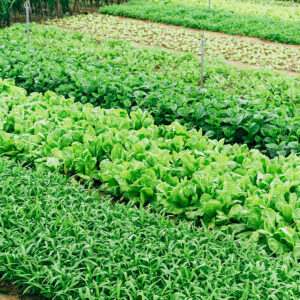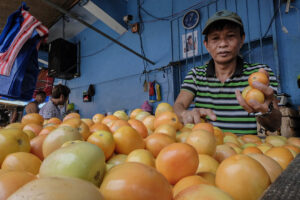(Part 4)
Before we describe in detail what is called the Industrial Revolution 4.0 (IR 4.0) let us consider the greatest roadblock that prevented our having a thorough going industrialization, with manufacturing a lead sector, unlike the large countries such as England, the US, France, Spain, and Italy that preceded us in transitioning from a predominantly agricultural to an industrialized economy.
One historical fact that was drummed into our heads by Professor Alexander Gerschenkron, my Economic History professor at Harvard, was that the first ever industrial revolution that occurred in England during the period 1770 to 1840 would not have been possible without a previous agricultural or green revolution. As we can read in Wikipedia, the British Agricultural Revolution consisted of an unprecedented increase in agricultural production between the mid-17th and late-18th centuries. Agricultural output grew faster than the population over the hundred-year period ending in 1770, which, not coincidentally, was the official start of IR 1.0. Thereafter, agricultural productivity in England remained among the highest in the world.
This increase in food supply in turn resulted in rapid population growth in England and Wales, from 5.5 million in 1700 to over 9 million in 1801. As the population grew even faster than the food supply, tripling during the 19th century, food imports also increased. Such population pressure actually had a positive dimension: it led to more innovative practices in agricultural technology.
If we use 1700 as a base year, agricultural output per farm worker in Britain steadily increased from about 50 in 1500, to around 65 in 1550, to 90 in 1600, to over 100 by 1650, to over 150 in 1750, rapidly increasing to over 250 by 1850. With this rapid rise in agricultural productivity, less manpower was needed in the farms, thus making the surplus labor available for the burgeoning industrial sector. For this reason, it has been said the agricultural revolution was the cause of the industrial revolution.
There are historians, though, who prefer to refer to the productivity improvements in agriculture as an evolution rather than a revolution since the changes were incremental and took centuries to transpire. For example, one important change in farming methods that led to higher output per hectare was the change in crop rotation to planting turnips and clover instead of leaving the land fallow or empty for the soil to recover the atmospheric nitrogen used by the plants as nourishment. Turnips could be grown in winter and are deep-rooted, allowing them to gather minerals for later use by shallow-rooted crops. Meanwhile, clover (and peanuts) fix nitrogen from the atmosphere into a form of fertilizer. These simple discoveries permitted the more intensive cultivation of light soils on enclosed farms and provided fodder to support increased livestock numbers whose manure added further to soil fertility. It cannot be overemphasized that this simple change in farming practice — not leaving the land empty (or fallow) for it to absorb nitrogen from the air — multiplied significantly the volume of crops that could be grown on the same amount of land. These changes happened over longer periods of time and therefore may not be considered “revolutionary” as the subsequent increases in manufactured products were during the industrial revolution. Some historians thus would rather use the term “evolution.”
For whatever lessons we may learn from a listing of the developments and innovations associated with the so-called British Agricultural Revolution (or Evolution), let me briefly describe the complex interaction of social, economic, and technological changes that brought it about. These developments and innovations include:
• Four-course crop rotation: fodder crops, particularly turnips and clover, replaced the practice of leaving the land fallow or empty, especially during the winter.
• The Dutch acquired the heavy, Chinese mold-board iron plough so that it could be pulled by fewer oxen or horses. Note that the Europeans also farmed with animals equivalent to our carabaos or water buffaloes. What is tragic is that at this late stage of our industrialization efforts, we still see carabaos working farms in the rural areas.
• Enclosure: the removal of common rights to establish exclusive private ownership of land. As we shall explain below, this was the opposite of agrarian reform. From small farms tilled by the serfs in the feudal manorial system, the feudal lords were able to consolidate the farms into bigger estates, thus attaining economies of scale in farming. This was referred to as the enclosure movement. In the process, a good number of those who used to work on the land became available as factory workers in IR 1.0.
• Development of a national market free of tariffs, tolls, and customs barriers. Before IR 1.0, the feudal system consisted of disjointed feudal fiefdoms that did very little trade with one another, militating against the creation of a mass market.
• Transportation infrastructure, such as improved roads, canals, and, later, railways (during IR 2.0). The most notorious failure in our efforts to develop was the utter neglect of farm-to-market roads for decades.
• Land conversion, land draining and reclamation. Engineering technologies of draining vast swamps resulted in more available arable land.
Let us elaborate on some of the main innovations that made up the so-called agricultural revolution. Crop rotation was the practice of growing a series of dissimilar types of crops in the same area in sequential seasons to help restore plant nutrients and mitigate the buildup of pathogens and pests that often occur when there is monoculture, i.e., only one plant species is planted over and over again. Another advantage of crop rotation is the fuller use of human resources: labor is employed at times when demand was not at peak levels. Then there was “convertible husbandry.” This was the alternation of a field between pasture and field. Because nitrogen builds up slowly in a pasture, ploughing up the pasture and planting grains resulted in high yields for a few years. A big disadvantage of convertible husbandry was the hard work of breaking up pastures and difficulty, in turn, of establishing them. The significance of convertible husbandry is that it introduced pasture into the rotation.
The most relevant feature of the agricultural revolution in England for our present efforts to increase agricultural productivity was the so-called “enclosure movement.” All over Europe during the Middle Ages, agriculture was feudal. In the feudal open-field system, peasant farmers were assigned individual narrow strips of large fields which were used for growing crops. For the right to work this land, they would pay a percentage of the yield to the aristocracy or the Catholic Church, who owned the land. A separate section of land in the same area would be “held in common” as grazing pasture. Periodically the grazing land would be rotated with the crop land to allow the land to recover nutrients.
In the 16th and 17th centuries, civil authority mandated the enclosures of these fragmented lands through acts of Parliament. The more productive enclosed farms meant that fewer farmers were needed to work in the same area, leaving many villagers without land and grazing rights. Many of them moved to the cities in search of work in the emerging factories of the Industrial Revolution 1.0. This “enclosure movement” should be the model of a very strategic move that the Marcos Jr. Administration has adopted: consolidating a large part of those farms, especially in the coconut sector, that were fragmented by the former Comprehensive Agrarian Reform Program (CARP) law that expired in 2014. To attain economies of scale in coconut, cacao, coffee, mangoes, avocado, durian, bamboo, palm oil, and other high-value tree or fruit crops, we need our own version of the enclosure movement. Only then can our agriculture take a significant productivity leap.
These commercial plantations — following the successful banana and pineapple models — are the only means to attain growth in our agricultural sector that can equal that of Thailand, Malaysia, and Vietnam. The continuing duty of the State to do everything possible to help the small farmers (e.g., in rice, corn, vegetables, livestock) improve their productivity is aimed at a goal more important than economic growth, which is to eradicate poverty. To go beyond poverty eradication, however, there is no alternative to increasingly consolidating some of the small farms to attain the necessary economies of scale so as to significantly increase the productivity of the agricultural sector.
This consolidation can be done through cooperatives, the nucleus estate model perfected by the Malaysians, and the conversion of denuded forests and grasslands into commercial plantations.
(To be continued.)
Bernardo M. Villegas has a Ph.D. in Economics from Harvard, is professor emeritus at the University of Asia and the Pacific, and a visiting professor at the IESE Business School in Barcelona, Spain. He was a member of the 1986 Constitutional Commission.















